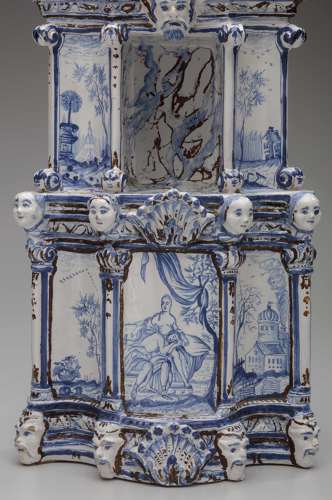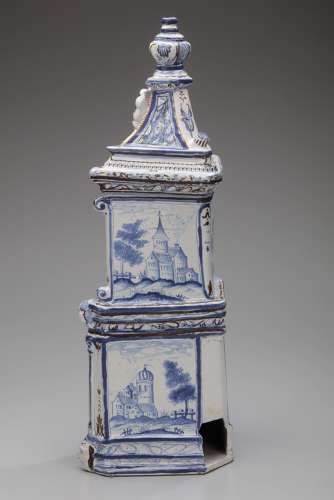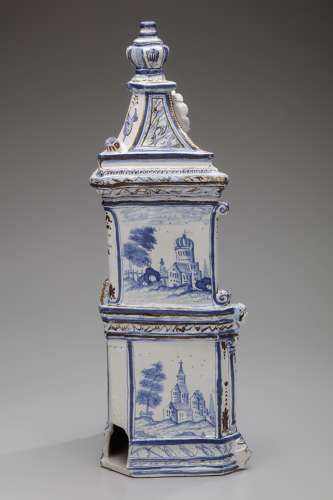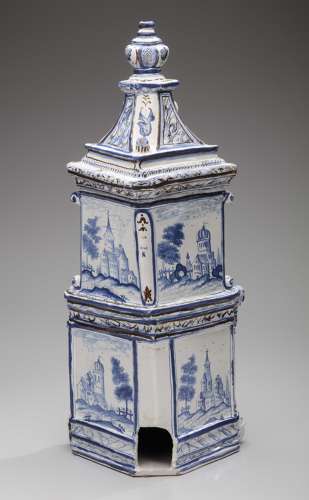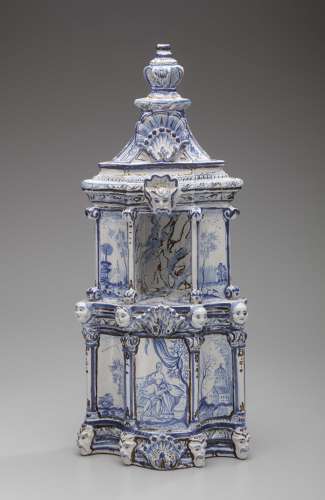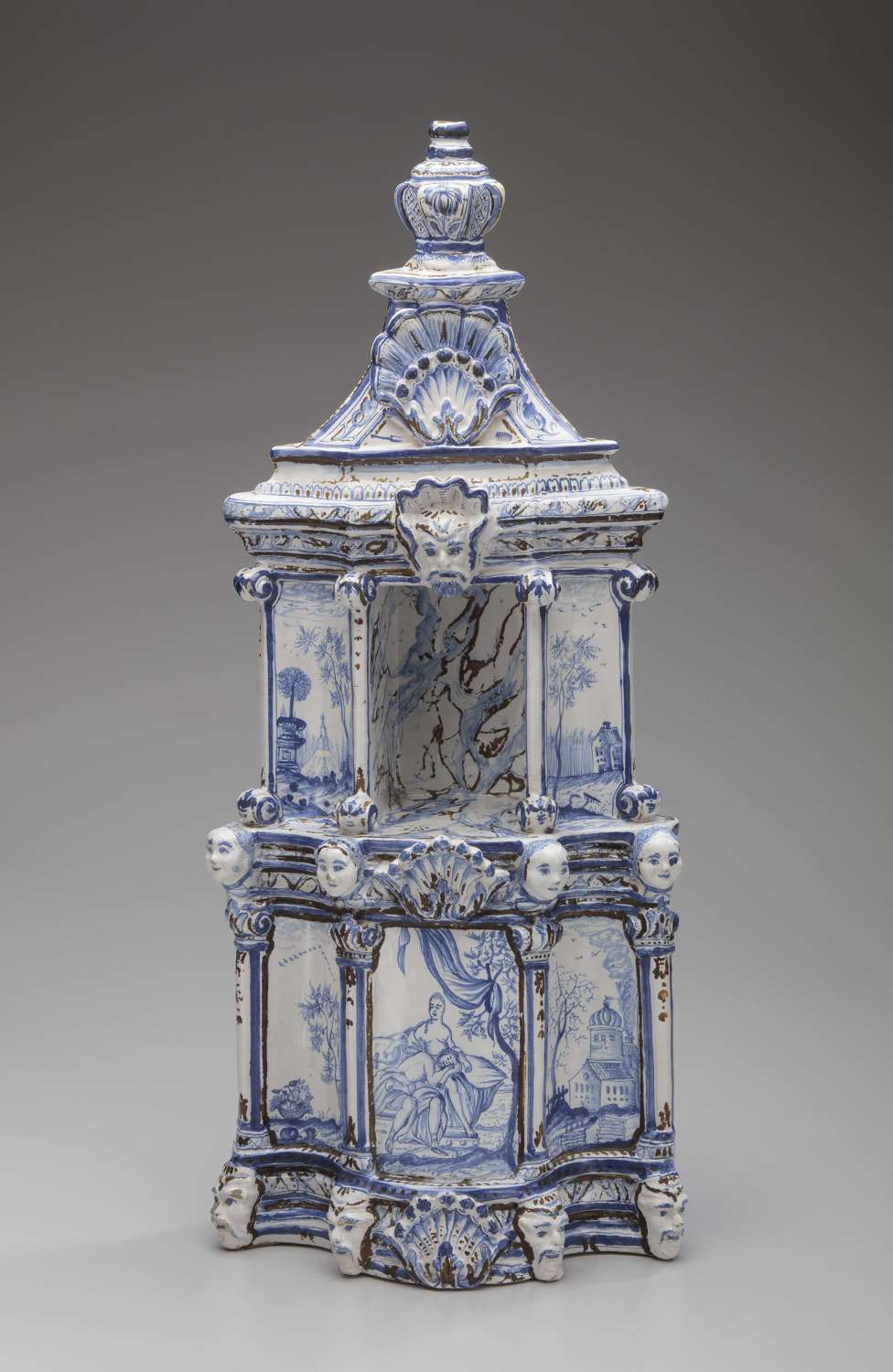
Abtsbessingen faience incense burner/oven model
Code: MB842
Circa 1747–50
Painted by Johann Gottfried Kiel
Height: 24 3/8 in. (62 cm.)
The Abtsbessingen faience factory was active from approximately 1739–1769/70. It was founded by Prince August I, younger brother of the ruling Price of Schwarzburg-Sondershausen, who lived in Ebeleben near Erfurt in Thuringia. There are no surviving archives from the manufacture itself, and what we know is gleaned from local church records, noting births, christenings, marriages, and deaths of factory craftsmen, as well as inventories of the princely collections surviving in some of the residences, such as Schloss Gehren and Schloss Ebeleben. The factory produced some of the most highly regarded faiences in the Thuringian region and was influenced by the neighboring factories of Dorotheenthal and Erfurt, with whom it probably shared sculptors, modelers, and kiln specialists. The factory mark consisted of a two-pronged hay fork and/or a comb, which can be found singly or together with a painter’s mark. Both the fork and the comb are elements of the Schwarzburg-Sondershausen coat-of-arms. Attempts were made by the Schwarzburg family to start a porcelain factory in Dorotheenthal from 1713 onwards. A faience factory was indeed established there circa 1715/16 by Princess Auguste Dorothea von Schwarzburg-Arnstadt and it continued in operation until circa 1805. She was the sister-in-law of August’s father, Prince Christian Wilhelm, and assisted Christian and August with their Abtsbessingen venture. When August I died in 1750, his widow, Charlotte Sophie (née Princess von Anhalt-Bernburg) continued running the factory until her death in 1762. Their son, Christian Günther I, took over the manufacture but had little interest in its continued success, and gave it over to Heinrich Christof Muth, who ran it as a tenant until 1770 when the factory building was sold. Most of the factory’s production went into producing wares for the use of both princely residences of Sondershausen and Ebeleben. Little outside revenue was produced by the sale of wares to the general public. The best known painters at the factory included Joseph Philipp Dannhöffer (active 1744-47), Johann Gottfried Kiel (active c.1747-66), Georg Friedrich Fuchs (active 1759-72) and Dölle. All signed their works with their initial.
An accomplished and prolific painter, Johann Gottfried Kiel (active circa 1747-66), was working there as early as 1747, as we know from a dated vase bearing his painter’s mark ‘K’ which also appears on the present incense burner. As it shares the same subject matter of Hercules and Omphale and other stylistic similarities, we can safely date the present oven to around 1747–50.
The best and most ambitious pieces from the factory were naturally made for the Court. Decorative elements included bearded men and lion mask handles, as well as molded shell and mascaron elements to be found on vases and tureens. All of these elements are present on the oven and incense burner models for which the factory was known. A castle inventory from 1753 tells us that a blue and white oven model was present in the audience chamber at Schloss Gehren.
Another example of an oven (but not functional as an incense burner) is in the Kestner Museum, Hannover, decorated with blue and white chinoiseries by Kiel. A pyramidal flower vase with polychrome flowers and bearing the Schwarzburg arms, unmarked but probably painted by Kiel circa 1750-60, is also in the Schlossmuseum Arnstadt. Philipp Dannhöffer (active 1744-47) was a talented artist who had trained at Du Paquier’s factory in Vienna, then went to Bayreuth before being engaged at Abtsbessingen. In 1747 he was lured away to Höchst by von Löwenfinck; this is indicative of the high level of recognition achieved by this factory, which had been able to attract such a talented painter, albeit for only four years.
